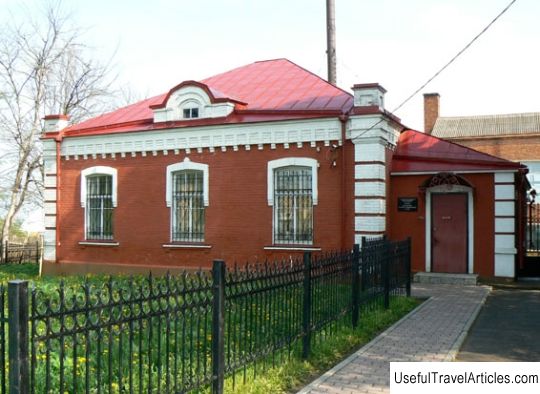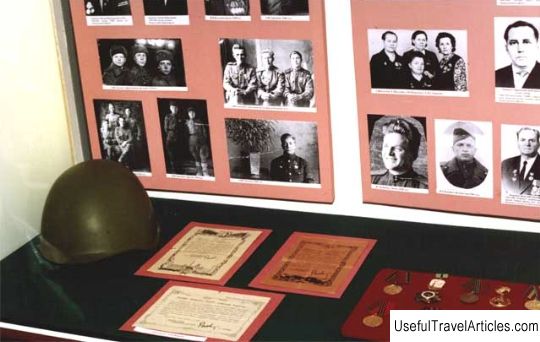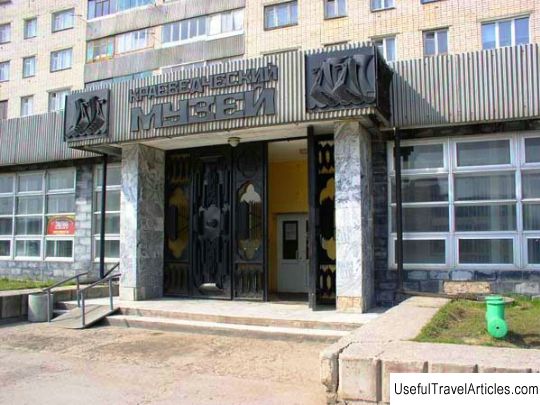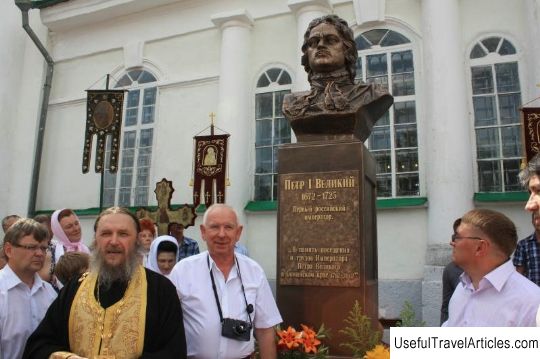Pikalevo Museum of Local Lore description and photos - Russia - Leningrad Region: Boksitogorskiy District
Rating: 7,7/10 (685 votes) 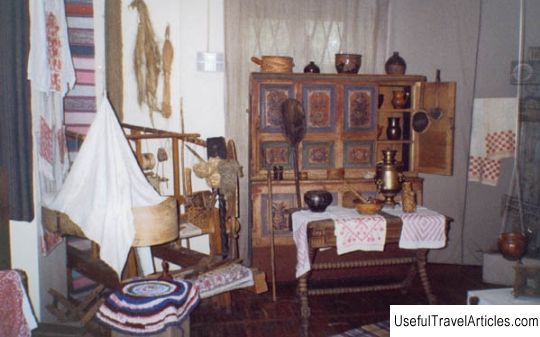
Pikalevo Museum of Local Lore description and photos - Russia - Leningrad Region: Boksitogorsky District. Detailed information about the attraction. Description, photos and a map showing the nearest significant objects. Photo and descriptionThe Pikalevo Museum of Local Lore was opened in mid-1978. The most important component of the museum was the exhibits of the center operating at the school, which was located in the small village of Spirovo, Boksitogorsky district. For the most part, all the declared copies were household or ethnographic objects, as well as photographs and documents relating to the historical development and results of the Great Patriotic War (1941-1945). Today the museum collection numbers about 14 thousand of the most varied exhibits. In the process of sorting and acquiring the fund museum collections, the closest attention was paid to household items and ethnographic exhibits. Everything related to ceramics was presented in the form of pottery, tiles, equipped with stamps and made at the own private factory of a wealthy landowner named Pirozersky, which was located in the village of Okulovo and operated until 1918. On the territory of the region until 1915, two glass factories were operating, one of which was called Ivanovsky and was located in the town of Velie, and the second was the Bystroretsky plant. The products of these particular factories are presented in the Pikalevo Museum of Local Lore in the form of container glass. In addition, the existing porcelain and earthenware of the Terekhov-Kiselev, Kuznetsov, Kornilov Brothers factories was in the hands of the local merchants. During the period from 1993 to 1996, numerous ethnographic objects that are in the funds of the local history museum, were exhibited at the Russian Ethnographic Museum. It should be noted that only thanks to the presented items of the Pikalevo Museum, the atmosphere of the Old Believer Karelian prayer house was practically completely restored. This collection includes old handwritten and early printed church books, while there are especially valuable copies dating back to the last years of the 18th century. The Pikalevo Museum also hosts an exhibition of ancient Russian painting, including a signed icon that was made Artemikh - a Tikhvin painter, as well as valuable Old Believer icons, the famous icon of the Smolensk Mother of God, which was once exhibited as part of a Belgian exhibition called "Russian Icon". The museum exposition is represented by a collection of graphics, dating back to the period of the formation of Soviet power - this is a collection of works by one of the talented professors of the Academy of Arts V. Vetrogonsky, which is dedicated to the hometown of Pikalevo. Among the creations of Vetrogonsky, one can also note a cycle of works related to the history of the development of the Russian Navy, as well as unique graphic works and paintings by local masters. The archaeological collection of the Pikalevo Museum, which perfectly tells about the history of development societies from the 4th millennium BC to the 13th century AD. The unique collection is rich in fragments of molded ceramics, flint tools, bones of some animals, various tools made of metal, as well as weapons. The buckle made of bronze became the subject of pride, on which there is an image of birds - this thing belongs to the period of the 11-12 centuries and has no analogues in the world. Among the variety of archaeological items presented in this collection, it is worth highlighting a fragment of a vessel dating from the 16-17 centuries BC. On the fragments of the vessel one can see inscriptions, most likely written in the oldest Indo-European language. It is especially noteworthy that a fragment of a vessel was found on the territory of modern Russia. You can get to the museum from the city of St. Petersburg, leaving the Moscow railway station and get off at the Pikalevo station, then change to a bus, or by bus from stops at the Obvodny Canal and to Pikalevo, or by car along the St. Petersburg highway through Volkhov and Tikhvin straight to Pikalevo.     We also recommend reading Palaichori village description and photos - Cyprus: Nicosia Topic: Pikalevo Museum of Local Lore description and photos - Russia - Leningrad Region: Boksitogorskiy District. |

